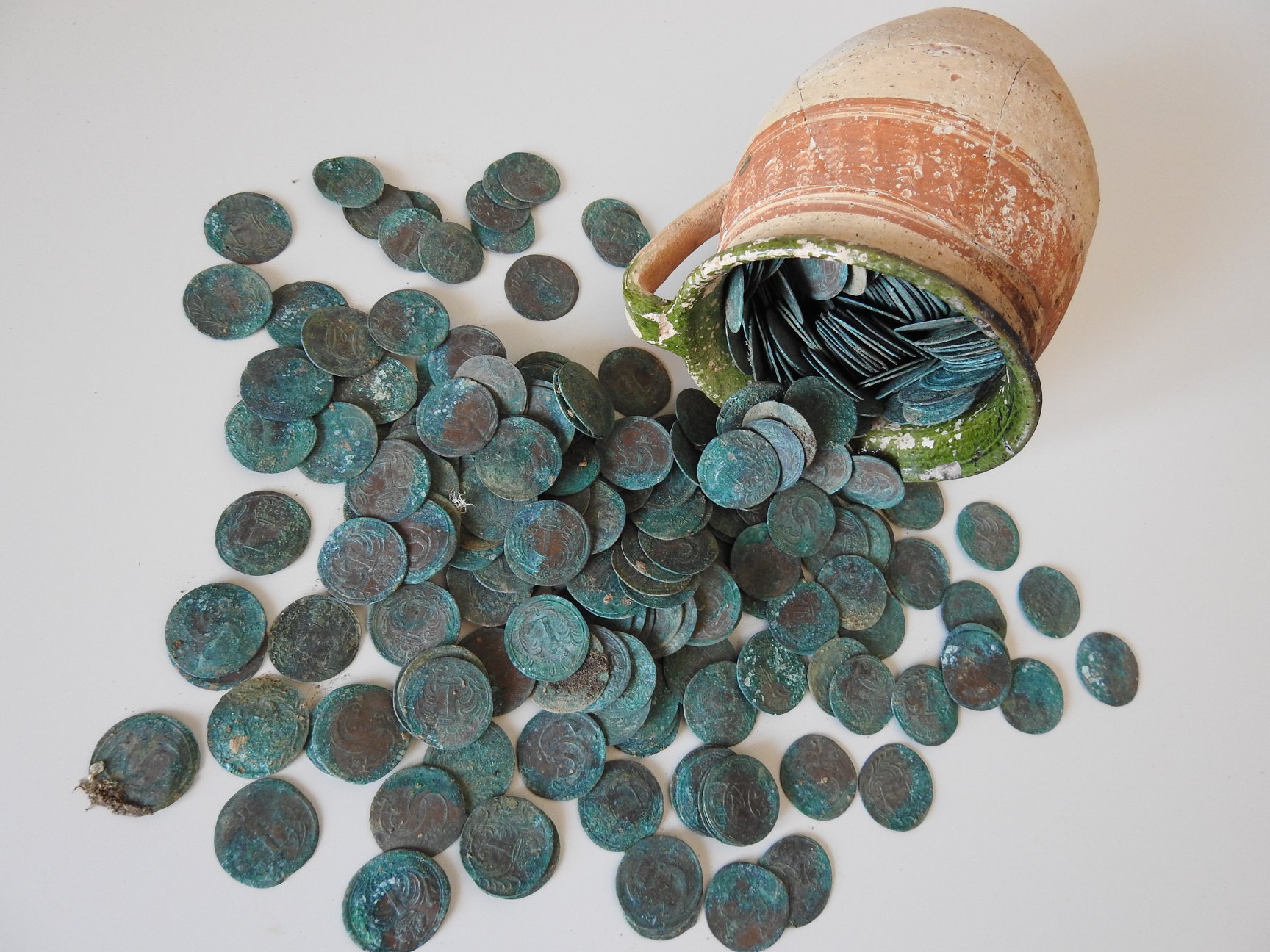
Slovakian archeologists have uncovered a trove of 500 silver coins dating as far back as 1702 hidden underneath a church floor. The significant historical find was made after construction workers discovered the ruins of a Renaissance-era church underneath the 19th-century church they were renovating.
The archeological company Triglav came in to investigate after the construction workers stumbled upon the old foundations at the church of St. Martina in Obišovce, near the eastern Slovakian city of Košice. The experts made the unprecedented discovery of the valuable hoard in February. The coins were hidden in a nondescript ceramic jug that had been concealed underneath a small flagstone in the original church floor. The jug was also sealed with a stone.
Most of the coins were minted by local mining companies, and the earliest one is stamped 1702, when Slovakia was ruled by Hungary as part of the Habsburg Empire. Some had come from Poland. The silver coins were individually wrapped in linen, and were likely collected as donations from pilgrims.
The archeologist Peter Šimčík, who worked on the team, was unable to estimate the value of the hoard to local press, but said that its historical value was “immense.” The mining stamps were a low-value local currency traded for basic goods, but Šimčík explained that miners also often used them as charity. “When they dropped them into the bag, they clinked like normal coins, and no one could tell what they put in it,” Šimčík said.
The group of archeologists explain on their Facebook page that they decided to name the treasure the “Mono-ocular Treasure” after a partially blind priest they believe hid the coins. Historical sources from the time relate that a new Catholic priest, who was Polish and blind in one eye, came to the church in around 1687. It is believed that this priest stashed the treasure to keep it safe amid a slew of uprisings against the Habsburgs during that period.
Reports indicate that the church was indeed raided and left to ruin in 1705 but the hidden trove went unnoticed. It was reconstructed in the mid-19th century and the hoard still wasn’t discovered until this year.
The treasure has been handed over to the state as required by Slovakian law when professional archeologists make a find.